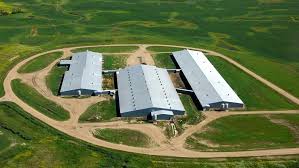
Farmscape for June 28, 2022
| Full Interview 9:53 | Listen  |
A Partner with Polar Pork Farms if the price of feed grain remains at its current high level, consumers can expect higher meat prices.
A combination of factors including shortages of locally produced feed grains due to last year’s drought, transportation challenges due to COVID and generally higher global grain prices due to the war in Ukraine has pushed grain prices to record levels. Florian Possberg, a partner with Polar Pork Farms, says, even at these higher prices, accessing feed grains has been difficult because it just isn’t available locally.
Clip-Florian Possberg-Polar Pork Farms:
Long term one of the strengths we’ve had in western Canada is that we’ve had feed grains available to feed to our livestock. Because of the drought and the demand for our grains in export, we really saw the pipeline of feed grains disappear locally. What we’ve had to do is establish access to corn, mostly from the U.S. and Manitoba where there is some corn production there to offset our inability to access feed wheat and barley. We’ve brought some corn up by rail for example, which we’ve never really done much of before so we were able to establish these pipelines to replace the grains that aren’t available locally with corn. It’s not ideal for us to do that but we have to feed our animals so that has been a way that we can offset that loss of local production.
Possberg says, if grain prices are going to be at a higher-level longer term, there’s no question that meat prices will go up because farmers can’t produce long term at a loss. He says if grain is in short supply, the price is going be higher and that will have to be reflected in our meat prices.
For more visit Farmscape.Ca. Bruce Cochrane.
*Farmscape is produced on behalf of North America’s pork producers





